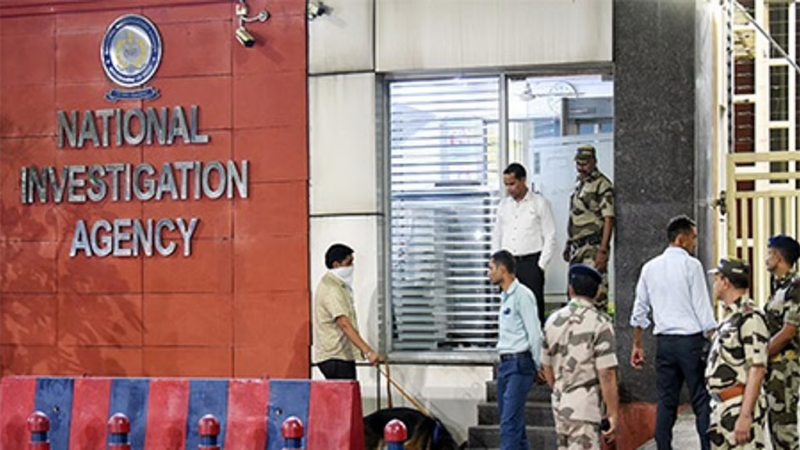Four key questions for the US after the Taliban’s Kabul takeover

US officials appear surprised by the Taliban’s rapid advance, raising new questions over how Joe Biden will proceed.
United States President Joe Biden on Monday is set to address the Taliban’s takeover of the Afghan capital Kabul, an event that capped a lightning offensive that saw the group capture most of Afghanistan in a matter of days.
US military officials had warned of the vulnerability of Afghan forces for years, including when former President Donald Trump announced in February 2020 that US troops would leave the country by May of this year.
Those warnings continued as the Biden administration said it would proceed with the withdrawal to end the US’s longest war, while extending the deadline for the pull-out to August 31.
Still, the Taliban’s sweep of the country – capturing 26 of Afghanistan’s 34 provincial capitals in a matter of weeks before it entered Kabul on Sunday – has exceeded even the least optimistic projections from the US intelligence and defence community.
It also forced the US to temporarily increase the number of soldiers being deployed to the country – now set to number about 6,000 in the coming days – as Washington scrambles to evacuate diplomats, staff and some allies.
But Biden and his top officials have continued to defend the withdrawal timeline, with the national security adviser, Jake Sullivan, saying the Taliban’s swift takeover proved the futility of continued US involvement in Afghanistan.
“It is certainly the case that the speed with which cities fell was much greater than anyone anticipated,” Sullivan said in an interview with NBC’s Today programme on Monday.
“At the end of the day, despite the fact that we spent 20 years and tens of billions of dollars to give the best equipment, the best training and the best capacity to the Afghan security forces, we could not give them the will and they ultimately decided that they would not fight for Kabul and they would not fight for the country,” Sullivan said.
As the world follows developments in Afghanistan, Al Jazeera looks at four key questions the Biden administration is now facing:
What will happen to Afghans who worked for the US military or other US organisations?
In July, Biden said a situation with “the Taliban overrunning everything and owning the whole country” in the immediate wake of the US troop withdrawal was “highly unlikely”.
“There’s going to be no circumstance where you see people being lifted off the roof of an embassy … of the United States from Afghanistan. It is not at all comparable,” he said, referring to the 1975 airlift of US citizens and some Vietnamese from the roof of a CIA building as Saigon fell to North Vietnamese forces.
But with images of US military helicopters ferrying diplomats from the US embassy in Kabul to the international airport, the statement has come back to haunt Biden.
As the US scrambles to evacuate its citizens, the situation of thousands of Afghans waiting for approval for special US visas has been further cast into limbo, with reports of some deciding whether to destroy the documents linking them to the US government for their own protection.
The US, along with several Western governments, had faced criticism for not expediting the relocations to better align with their troop withdrawals.
In late July, Washington announced the first of 2,500 approved Afghans who had worked directly for the US government, along with their families, had begun to arrive in the US. About 20,000 applications for the special visas were pending at the time.
The US this month also expanded its special refugee visa programme to include current and former employees of the US-based media organisations, aid and development agencies and other relief groups that receive US funding.
Meanwhile, the US has also been holding secret talks with several governments to secure agreements to temporarily relocate Afghan refugees as they await US approval, according to the Reuters news agency.
Such a plan remains precarious, as US forces struggle to maintain order at Afghanistan’s main airport, where commercial flights have been suspended. Some military evacuations of refugees were cancelled on Sunday, the International Refugee Assistance Project said on Twitter.
Will the US recognise a Taliban government?
US Special Representative to Afghanistan Zalmay Khalilzad last week warned Taliban representatives in the Qatari capital, Doha, that their government would be a global pariah if it took power by force.
On Sunday, Secretary of State Antony Blinken said the US would only recognise and work with “a future Afghan government that upholds the basic rights of its people and that doesn’t harbour terrorists”.
Speaking on CNN, he said the US would not lift sanctions on Taliban members unless they respect human rights and called on the international community “to do everything we can using every tool that we have – economic, diplomatic, political – to ensure [those] rights are sustained”.
On Monday, Sullivan said Biden is “prepared to marshal the international community” on maintaining human rights in Afghanistan.
What does this mean for US national security?
Since taking office, Biden administration officials have been frank about how precarious the situation in Afghanistan remained, but said Washington would not wait for stability before withdrawing US troops.
Even as video footage emerged of Taliban fighters entering the presidential palace in Kabul, US officials, including Secretary of State Antony Blinken, maintained the US mission had achieved its goals: to rout those responsible for the 9/11 attacks and neutralise direct threats to the US.
But the speed with which the Taliban advanced has raised new questions over the possible rise of malign actors in Afghanistan.
In a briefing with US senators on Sunday, General Mark Milley, the chairman of the Joint Chiefs of Staff, said officials are expected to alter previous assessments about the pace of “terrorist” groups reconstituting in Afghanistan, a person familiar with the matter told The Associated Press news agency.
The briefing came shortly after the Taliban on Sunday seized the Bagram Airbase, freeing thousands of inmates, including senior members of al-Qaeda.
Milley and Secretary of Defense Lloyd Austin had in a June Senate committee hearing estimated it would take about two years for a group like al-Qaeda or ISIL (ISIS) to rebuild enough in Afghanistan to pose a direct threat to the US.
Is this a US intelligence failing?
In June, the Wall Street Journal reported that US intelligence officials updated a previous assessment to say the Afghan government could fall within six months to a year after the US troop withdrawal.
On August 10, as the Taliban began capturing key provincial capitals, officials told The Washington Post the assessment had been revised to warn the collapse could happen within 90 days, with some saying it could happen in a month.
Just five days later, as the Taliban entered Kabul and President Ashraf Ghani fled the country, Blinken told CNN the Afghan military’s inability to defend Afghanistan “happened more quickly than we anticipated”.
At the same time, some observers, including William Maley, an Afghanistan analyst and emeritus professor at The Australian National University, have suggested the Taliban’s swift advance has “shredded” the US credibility in foreign policy.
“For no great gain, [the US] sold out the most pro-Western government and public in the region to a brutal terrorist group, all this after having long promised the Afghans that they would never be abandoned,” he wrote on The Conversation news website.
Others, such as Stephen Walt, a professor of international affairs at Harvard Kennedy School, have rejected claims that the US credibility has been damaged. “What it may have damaged is confidence in US foreign policy judgment and competence,” Walt wrote on Twitter, “but that process began a long time ago.”






